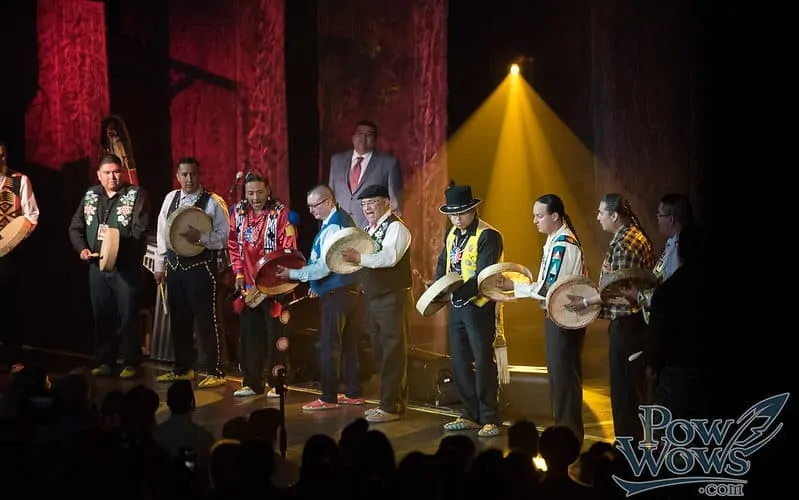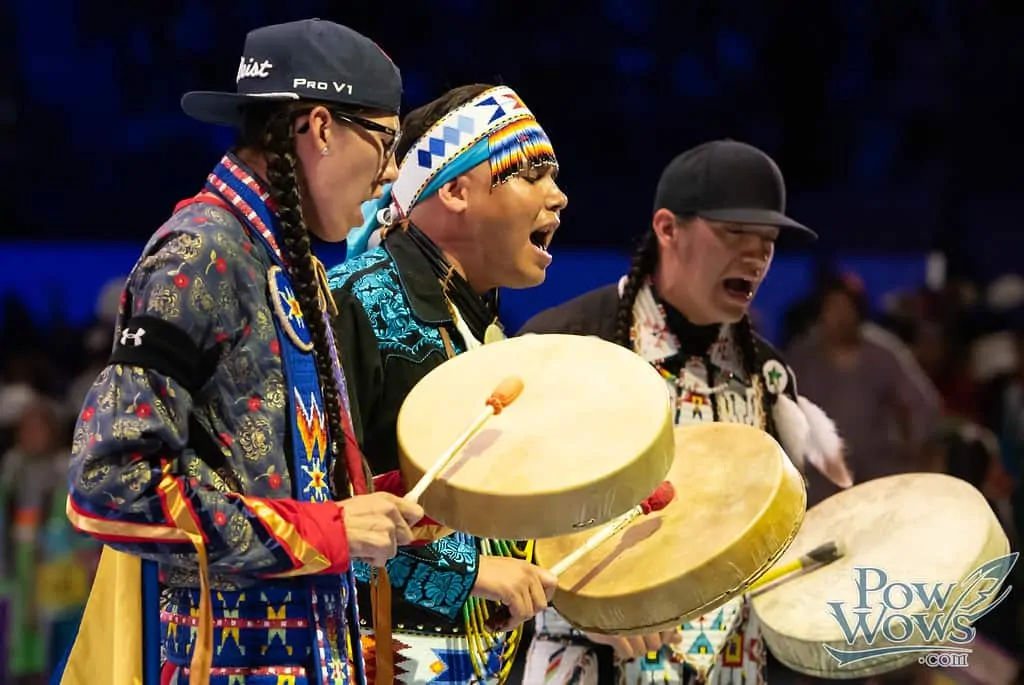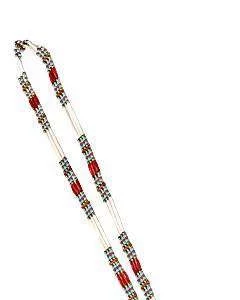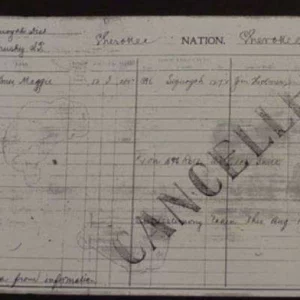All across North America, Native American nations have come together to perform various round dances throughout the ages. Usually held during the colder autumn and winter months indoors, they have been used as a central focus of various gatherings designed for socialization and community building. Understanding the meaning of round dance events can give you a unique perspective into the history and modern take on these shared traditions.
Almost every event or cultural practice you can find Native Americans doing today has its roots in days long gone by. The same is true for round dances.
What Is a Native American Round Dance?
As mentioned above, a certain community of Native Americans would come together in a chilly afternoon to prepare for a round dance. The determination of when round dances are held depends on the interests of the specific tribe who decides to hold. Sometimes, there is simply scheduled randomly as social events. Other times, they are used to celebrate secular holidays like New Year's Eve.
History of Round Dances
It is difficult to determine when the first Native American round dance was held. They were popular with the Plains Indians including the Cree. (http://native-dance.ca/en/renewal/cree-round-dances/) Early history and legend state that they were introduced to the earliest forms by the Assiniboine tribe. In those long-ago days, the slow-moving, circular dance was part of a healing ceremony. They were often only one part of a longer event that may have included prayers, gift-giving, feasting, and other social activities.
The legend that began the entire round dance tradition comes from the Cree Indians. It tells the tale of a woman who stayed with her beloved mother all throughout her life. When the mother passed away, the daughter was beset with such grief that she was visited by her mother's spirit to help calm her sorrow. The mother introduced the idea of a circle dance where all the people and ancestors will come together, surround each other with support and love, and thus her grief.
In the Cree nation, the northern lights were seen as the ancestral spirits that went on before to the Green Grass world, which was essentially this people's heaven. The round dance performed under the aurora borealis was said to be especially auspicious. (https://creeliteracy.org/2012/12/19/elder-john-cuthand-shares-the-story-of-the-round-dance/) This was a representation of the original story in which the mother's spirit revealed that all the ancestors would come and dance with the living people in the community.
The earliest instances of NA round dances included honoring ancestors with tobacco and Sweetgrass smoke, offerings to the deceased, sacred artifacts, and even ghost regalia in some cases. (https://ammsa.com/publications/windspeaker/join-circle-history-and-lore-round-dance-0). These earliest iterations were much more steeped in spirituality and meaning than they are today. As with most other cultural experiences of the indigenous people of North America, things changed considerably when European settlers arrived and took over their lands and systematically worked to destroy their cultures.
For a while, round dances did not happen very frequently. The ancestral meanings of them disappeared or simply morphed into a lighter focus on community and togetherness. The more modern variations seen today show they are intended as upbeat events that encourage people to join in and become part of the circle that signifies everyone being equal and together as an important part of the group. Although symbolic in a way that most Native American dances or ceremonies are, they are not extremely deep with meaning or purpose. In many cases, they are simply a way to let everyone have a good time and be a part of the native experience.
How Native American Round Dances Work
In essence, the title of these types of dances giveaway their structure. They are usually held in a very large room or outdoors at a powwow or other community gathering. Because they were traditionally cold-weather events, it makes sense to use a large hall or meeting room. The dance commences when the drumming and music start with a group of people forming a circle near the center of the floor. They may or may not join hands.
The circle then rotates in a set direction depending on the type of dance and the general instructions of whoever is in charge of the gathering. Other rings of people dancing generally go in the same direction as the inner circle, but this can differ in some instances, too. Frequently, the people involved step to the side for their leading foot and then bring the following foot up next to it before stepping again. This is done in rhythm with the drums and music.
Some of the flash mob style round dances that take place today occur in indoor locations that do not allow for the traditional circling motion. For example, if Native American groups come together in a shopping mall, they may simply cluster together in a giant round group and move in a mass rather than in separate concentric circles. Unless you are part of the event itself, you should not assume how it works or join in randomly.
Other events focused on cultural education or community spirit will frequently include an instructional period. A leader or “masters of ceremony” will take the time to invite people to participate and explain how the dance itself works. This makes it much easier for non-natives or unaffiliated people to know if they should join in or not.
Variations exist in this basic format. For example, the Cree Tail Wagging Dance invites men and women to pair off in couples and dance together while still inscribing the same clockwise circle as the rest of the group. Because Native American round dances are seen primarily as a way to be inclusive and bond with the community or first nation hosting the event, the focus on staying with the beat is rather strong. Still, the joy comes from joining in and doing your best rather than performing particular moves or steps.
Round Dance Music and Singing
All Native American round dances feature rhythmic drumming prominently in the music. This helps people keep the beat of their dance moves or walking around the circle. It also helps to increase the meaning of the dance as it symbolizes the heartbeat of all the people joins together. (https://prairieedge.com/blog/native-american-music-round-dance/).
In various plains Indian cultures and tribes found all across North America, the drum is one of the most important and meaningful instruments in the musical styles. Different types are used for different dances or events. With a round dance, musicians or dancers themselves use smaller, higher-pitched drums to keep the beat.
If you have ever attended a powwow or other Native American event, you have heard the unique timbre and cadence of their musical styles. Many of the songs sung or played with instruments have deep meaning as well as an impressive sound. During a round dance, the singing frequently uses English instead of native languages.
Meaning of Round Dance
Throughout the years, the Plains Indians who started the Native American round dance tradition have come together to use them for various purposes. As mentioned above, they were originally used more specifically for events with one purpose. These could include funerals, spiritual gatherings, or holiday celebrations.
As time went on, the meaning evolved into a more general idea of coming together. This is both symbolized with the circular format of the dance itself and the lyrics of the songs that are sung there. In many cases, they focus on love, friendship, and even humor.
Modern Round Dance Events
Because of the inclusive nature of American Indian round dances, they have become a symbol of and frequent practice at events that celebrate first nation's life and culture. They are held at powwows all across the country, but different organizations and movements also use them to foster a sense of togetherness.
For example, a unique movement called Idle No More in Canada held frequent flash-mob style round dances to raise awareness for their concerns. (https://www.sktcorp.com/round-dancing-a-tribal-tradition-at-powwows/) This protest movement, which began in 2012, to counter and correct legislative decisions that do not offer appropriate respect and support for aboriginal communities. In this case, the Native American round dance is used as a type of civil disobedience or demonstration.
If you are interested in witnessing or taking part in a round dance, you can undoubtedly find events all across North America held at different times of the year and for different purposes. Some other options include a Toronto-based event at the Evergreen Brick Works (https://www.evergreen.ca/blog/entry/winter-round-dance-honouring-the-traditional-teachings/) held to honor tradition and culture.
When Are Round Dances Held?
Other than a general preference for round dances to be held during the late autumn and winter months, there are no specific dates or times that these Native American gatherings occur more often than not. In current times, they are primarily held as special events for a unique purpose like the ones listed above. If you wish to participate or observe, you should get in contact with organizations or tribes in your area. You can also check the calendar on PowWows.com.
With a focus on community building, you may consider that people from all walks of life, cultures, and ethnicities could get involved with these circle dance events. However, as with all things associated with a particular culture, it is important to step lightly and ask questions before you jump in.
Can I Dance at a Round Dance?
Different events and dances have different rules and intentions surrounding them.
Even though the Native American round dance focuses on community and togetherness, that does not necessarily mean the people involved with a specific gathering want just anyone getting involved. This is not to say that the Native American people are exclusive or rude to outsiders. It simply means that anyone should practice the utmost respect when approaching a cultural event like this.
Potential Problems With Non-Native Participants
As inclusive as many Native American groups wish to be, some are understandably reticent to allow open invitations to group dances and celebrations. This primarily stems from unfortunate experiences they may have had in the past with people who held onto old-fashioned and bigoted stereotypes or who saw the whole event like a party rather than one with cultural meaning.
Especially in the United States these days, having some Native American ancestry seems to be popular and commonly believed by many people who have no proof that it is true. Of course, if you do have these ethnic traits, it is an excellent idea to learn about your ancestors and get involved in the culture in a respectful way. However, pretending to be an “Indian” or holding on to some uncomfortable ideas about the cultures will lead to unpleasant situations and disrespect.
Some Native American dances do not welcome outsiders. Although the round dance is not usually one of these, it is important to understand that the events are quite meaningful and important to the cultures practicing them. It is very different than a whole bunch of random people getting together for a block party with music playing and fun dancing going on.
How to Get Involved Respectfully
First, make sure the round dance event is open to anyone attending. If in doubt, simply ask questions of the organizers. This is equally as important if you wish to observe or if you want to participate in the dance itself.
Round dances are quite easy, so you do not have to be very graceful, athletic, or trained before dancing in the round. It is even quite easy for children to participate. When you are ready to dance, follow the lead of other dancers.
From the earliest times when the Cree Indians would come together to celebrate their tribal identity and relationships with nearby groups, Native American round dances have evolved just like many other practices and rituals practiced by native people all across North America. Although some were originally held for specific events, the overwhelming reason to hold a round or circle dance was simply to gather everyone together and enjoy community, fellowship, and a good time. They are about equality, togetherness, and celebration and respect of the cultures involved.
While some round dances today come from specific movements or protest groups that use them as a type of civil disobedience to show solidarity and support pro-native legislature, many are simply cultural events that are accessible to anyone. If you are not a Native American and still want to get involved, ask respectful questions of the organizers or visit a public powwow for an invitation.
No matter where you come from or who your ancestors were, experiencing in Native American round dance can truly help you understand the type of cohesive spirit and purposeful fun that surrounds these events. From cultural festivals to flash mobs, round dances have come a long way while still staying grounded in the traditions of the far past.
Countdown to Gathering Giveaway
Bonus Code – 743727
Last Updated on March 25, 2024 by Paul G






Dawn Thickfoot
says:Thank you for the information, I have recently been given the gift of becoming a Pow wow Instructor in the School I work at, what a gift to be given! to be trusted to teach these little ones. I can now pass this information on the round dance and the original meaning. I am a very proud Cree woman who seeks knowledge to pass on to my students and my children.
Ayhay
D.Thickfoot
Lynn Jenkinson
says:Thank you so much for this tutorial. I am not Native American, just plain old white mongrel. I do, however, have a great and abiding respect for all Indigenous peoples and have ever since I can remember. I have often wanted to take part in a Round Dance but felt I had no right to do so. It calls to me but it is not for me to decide. I appreciate these explanations and videos very much and feel that next time I am at a public Pow Wow, I will find out if it is ok to participate.
Respectfully, and Many Blessings,
Lynn
ButterflyOwlWoman
says:Hi Lynn
Unlike other people’s, we are truly color blind.
Any nationally, creed or color is welcome at our powwows, dances, sweat lodges and sun dances.
Please join in our dances.
Speak to the people.
A’ho sister
Butterflyowlwoman